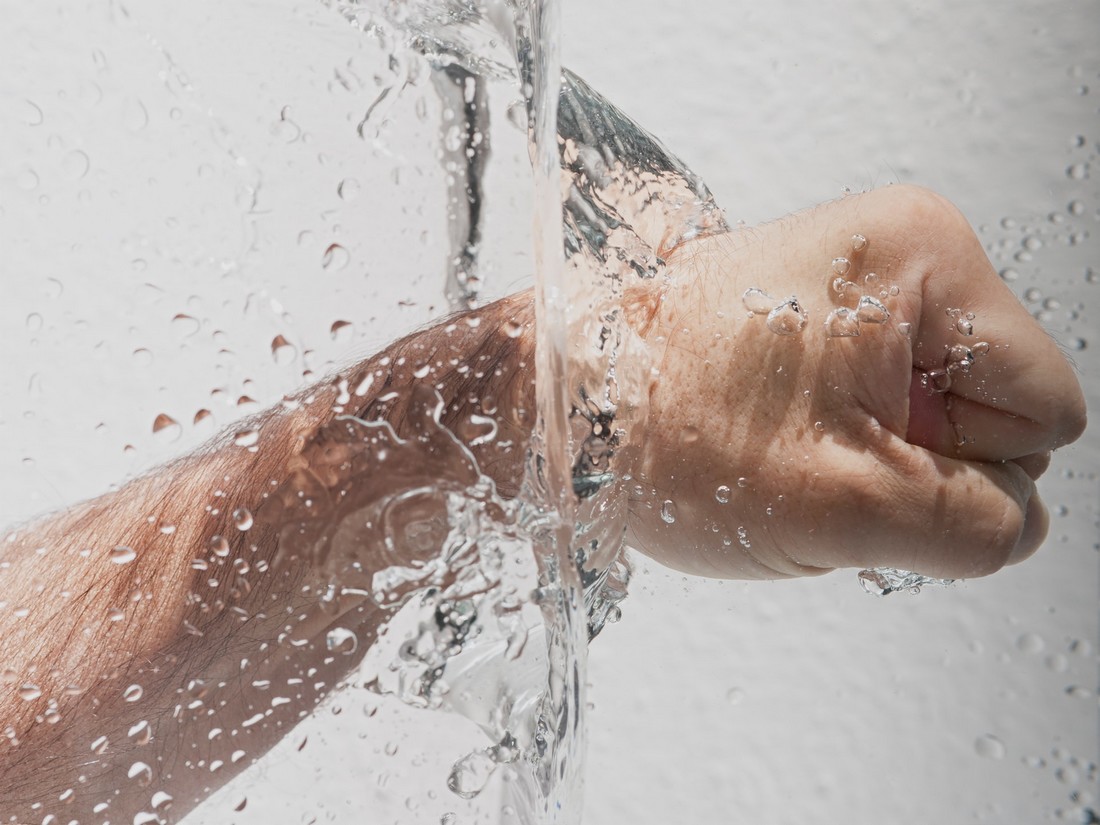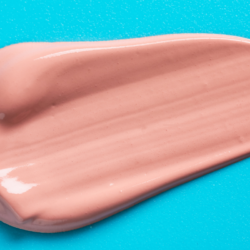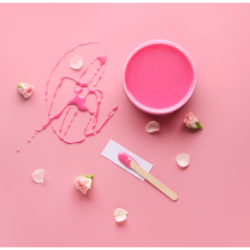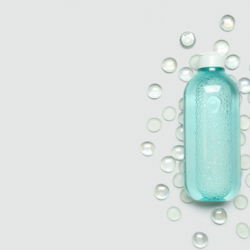Welcome to this guide to thermal spring water, your natural ally for skin, bones and even breathing. We start with its starring role in dermatology, thanks to scientific data and expert advice. Then we explain how it differs from hydrotherapy and why it’s important for your skin care. We finish with a brief overview of the different types of thermal baths. Whether you’re a health professional, a science enthusiast or simply curious, you’ll find plenty here to quench your thirst for knowledge.
What is thermal water?
Thermal spring water, a natural resource with multiple virtues, is at the heart of many health and well-being traditions. Let’s take an in-depth look at its mineral composition, its benefits for the skin and its role in balneotherapy.
The many benefits of thermal spring water for the skin
According to Joshua Zeichner, MD, a dermatology expert at Mount Sinai Hospital, thermal spring water has a range of beneficial effects on the skin, including calming and anti-inflammatory properties. Ideal for use in dermatology, it is also recommended by leading skin care brands such as La Roche-Posay, Avène and Uriage.
Balneotherapy VS hydrotherapy: A crucial distinction
It’s essential to differentiate between balneotherapy and hydrotherapy. Balneotherapy uses mineral-rich water, while hydrotherapy uses ordinary tap water. The benefits of balneotherapy are largely attributed to the unique composition of thermal water.
What minerals are found in thermal spring water?
Thermal waters differ considerably depending on their source, each offering a distinct mineral profile that can include calcium, magnesium, sodium, bicarbonate, silicon, zinc, selenium and sulphur. These minerals are crucial for their role in maintaining skin integrity, promoting healing and protecting against environmental damage.
- Calcium and magnesium are vital to skin health, acting to strengthen the skin barrier and regulate skin hydration.
- Sulphur, often found in thermal waters, is particularly beneficial for inflammatory skin conditions such as acne, due to its antibacterial and antifungal properties.
- Silicon plays a role in the synthesis of collagen and elastin, contributing to the skin’s elasticity and structure.
- Trace elements such as zinc and selenium are known for their antioxidant properties and their ability to promote wound healing.
These elements make thermal spring water a valuable component not only for therapeutic applications but also in skin care product formulations, where they help to nourish, repair and revitalise the skin.
Physico-chemical properties
From a physico-chemical point of view, thermal spring water is characterised by its high temperature and richness in dissolved minerals. The temperature of the water, which is often higher than that of the environment when it emerges from its source, means that the minerals are more soluble, making them more available when they are applied to the skin or used in hydrotherapy.
- The high thermal conductivity of thermal spring water allows minerals to penetrate the skin quickly and effectively, providing almost immediate beneficial effects.
- The dilution and transport properties of the water are enhanced by its unique composition, allowing optimal transfer of nutrients across skin barriers.
These specific properties make thermal spring water extremely effective for a variety of therapeutic treatments, including hydrotherapy, where it helps to relax muscles, reduce inflammation and improve blood circulation.
Varieties of thermal baths: Influence of geography
There are several types of thermal bath, including those rich in sulphate, bicarbonate, chloride and sulphide. The geographical location of the spring has a significant impact on the properties of the water, with each spring offering a unique chemical composition and physical properties.
Thermal water, hot spring water, bubbles up from deep within the earth, passing through rocks and soil . Throughout its history, mankind has always believed in the therapeutic virtues of this natural, organic and pure water. It has been used for thousands of years to relieve a long list of ailments: rheumatism, respiratory problems, osteoarthritis, psychosomatic disorders… In ancient civilisations, thermal baths were even considered sacred places, because of their healing powers.
What are the real benefits of thermal spring water?
The attraction of thermal baths is a centuries-old phenomenon, bearing witness to a tradition that has survived the ages to inspire modern spas. This age-old practice can be found all over the world, from Japanese onsens to Latin American termas to Icelandic geothermal springs, each offering unique experiences imbued with local mineral wealth.
Mineral compounds and therapeutic properties
According to renowned dermatologists and scientific studies, thermal waters have been exploited for their medicinal virtues for thousands of years. These natural springs are particularly valued for their content of essential minerals such as sulphur, recognised for its anti-inflammatory and anti-microbial effects.
Clinical research has demonstrated the effectiveness of thermal waters in the treatment of a variety of conditions, including :
- Rheumatoid arthritis: Thermal baths can reduce the pain and inflammation associated with this autoimmune disease.
- Osteoarthritis: Regular immersion helps to improve joint mobility and reduce painful symptoms.
- Ankylosing spondylitis: The thermal and mineral properties of water can help relax muscles and joints, providing significant relief.
- Psoriasis: The sulphur and other minerals present in thermal water can help soothe the skin, reduce inflammation and accelerate the healing of plaques.
In addition, immersion in these mineralised waters has a positive influence on the immune and endocrine systems, triggering anti-inflammatory, analgesic and antioxidant responses. These responses not only provide temporary relief, but can lead to lasting improvements in individuals suffering from chronic illnesses.
So the benefits of thermal water extend beyond simple relaxation to include profound therapeutic effects that support physical health and general well-being. These virtues, recognised and appreciated throughout the ages and cultures of the world, continue to be an essential pillar of modern natural therapies.
Proven skin benefits
Thermal waters are widely recognised for their many dermatological benefits, particularly in the management of inflammatory skin disorders such as eczema and rosacea. Their unique properties give thermal spring water a place of choice in skin care, as shown by various clinical studies.
-
Skin hydration
Research has shown that thermal spring water can significantly increase the skin’s moisture level, making it softer and more elastic. This is due to the presence of minerals such as magnesium and silicon, which promote water retention within the epidermis, improving skin hydration and strengthening the skin’s protective barrier against external aggression.
-
Neutralises the effects of UV rays
Exposure to UV rays is one of the main causes of skin damage, including premature ageing and increased risk of skin cancer. The minerals in thermal spring water, such as selenium and zinc, have antioxidant properties that help neutralise the free radicals generated by UV exposure. This protective action helps to minimise skin damage and preserve skin health.
-
Reduces skin inflammation
Thermal spring water is also recognised for its ability to soothe skin irritations often observed after intensive dermatological treatments, such as the application of retinoids. The components of thermal spring water, in particular sulphur and bicarbonate, play an essential role in reducing inflammation and promoting healthier, more resilient skin.
-
Restoring the skin microbiome
A study published in 2018 highlights that thermal spring water could play a crucial role in balancing the skin microbiome. In patients suffering from psoriasis or eczema, regular use of thermal spring water showed a significant reduction in skin inflammation. This is attributable to the modulation of the microbiome by the minerals in the water, which promote a more balanced skin environment that is less conducive to inflammatory outbreaks.
How to enjoy the benefits of thermal spring water this summer
In summer, thermal spring water is mainly used as a refreshing mist. Although it is suitable for even themost sensitive skin, thermal spring water has many other functions in your skincare and beauty routine.
-
Thermal spring water to revive the radiance of your eyes:
Jet lag, a sudden change in diet and sleeping habits, not to mention gettinga natural tan in the sun during the summer season – our lifestyles are turned upside down. As a result, tiredness and dehydration set in, making your eyes look deeper. To soothe your eyes, spraychilled thermal spring water onto cotton wool and apply as a poultice to your eyelids. The result is immediate!
You can also rely on the smoothing effect ofUriage Anti-Fatigue Eye Contour Water Care, which reduces dehydration lines and diminishes dark circles and puffiness. Designed forsensitive skin, this treatment effectively moisturises and refreshes the delicate skinaround the eyes. Uriage Thermal Spring Water, enriched with minerals and trace elements, is an isotonic water that acts in osmosis with the skin cells.
-
Thermal spring water to soothe post-depilation irritation:
We all know that beautiful, soft legs in summer are a must. But let’s face it, after waxing, whether hot or cold ,the skin heats up, burns and itches…nothing pleasant. Cooling the skin directly after waxing with thermal water will help relieve these irritated areas. If you have fragile skin, you can opt forAvèneThermal Water Spray. Its soothing and anti-irritant action will provide you with comfort .
-
Thermal spring water as a soothing after-sun treatment:
During this period, sunburns are legion. Despite numerous recommendations and all the known measures, a strong sensation of heat and burning can be felt after prolonged exposure to the sun. Once again, thermal spring water is the perfect solution to ease the discomfort.Ideal Soleil soothing after-sun milk from Vichy is a treatment enriched with Vichy thermal spring water that regenerates, moisturises and repairs the skin.
-
Thermal spring water as a make-up fixative :
When it’s hot, we tend to put make-up on the back burner. It has to be said that no one wants to have a blotchy complexion, let alone mascara dripping from perspiration. Fortunately, there’s an unstoppable trick you can use to continue displaying your make-up artistry, even when it’s 38°C out. And that trick is thermal spring water, which can act as a make-up fixative.
Before your day care, mist your face with thermal spring water. It will form a perfect base and help your day cream to adhere to your skin. Once you’ve finished your make-up, spray some more 30 centimetres from your face. These simple gestures will enhance your complexion and keep your make-up intact all day long. They’ll also set and moisturiseyour skin. In the evening, after you’ve removed your make-up, spray on another spritz and enjoy the moisturising and soothing properties of thermal spring water.
-
Refresh yourself as soon as you wake up with thermal spring water:
Spray your face with thermal spring waterto wake up the epidermis and tone your skin. The fresh feeling will give you a healthy glow. Continue doing this throughout the day to feel therefreshing effect of the thermal spring water all the time .
As you‘ll have realised, thermal spring water is one of the essential products to use all year round, thanks to its many virtues. However, depending on the source from which it is taken, thermal waters act differently from one another. So don’t hesitate to ask your pharmacist for advice on choosing the right thermal spring water for your needs!
Source of information:
- https://pubmed.ncbi.nlm.nih.gov/29879253/
- https://pubmed.ncbi.nlm.nih.gov/10561055/
- https://www.ncbi.nlm.nih.gov/pmc/articles/PMC3549667/
- https://pubmed.ncbi.nlm.nih.gov/29221588/







